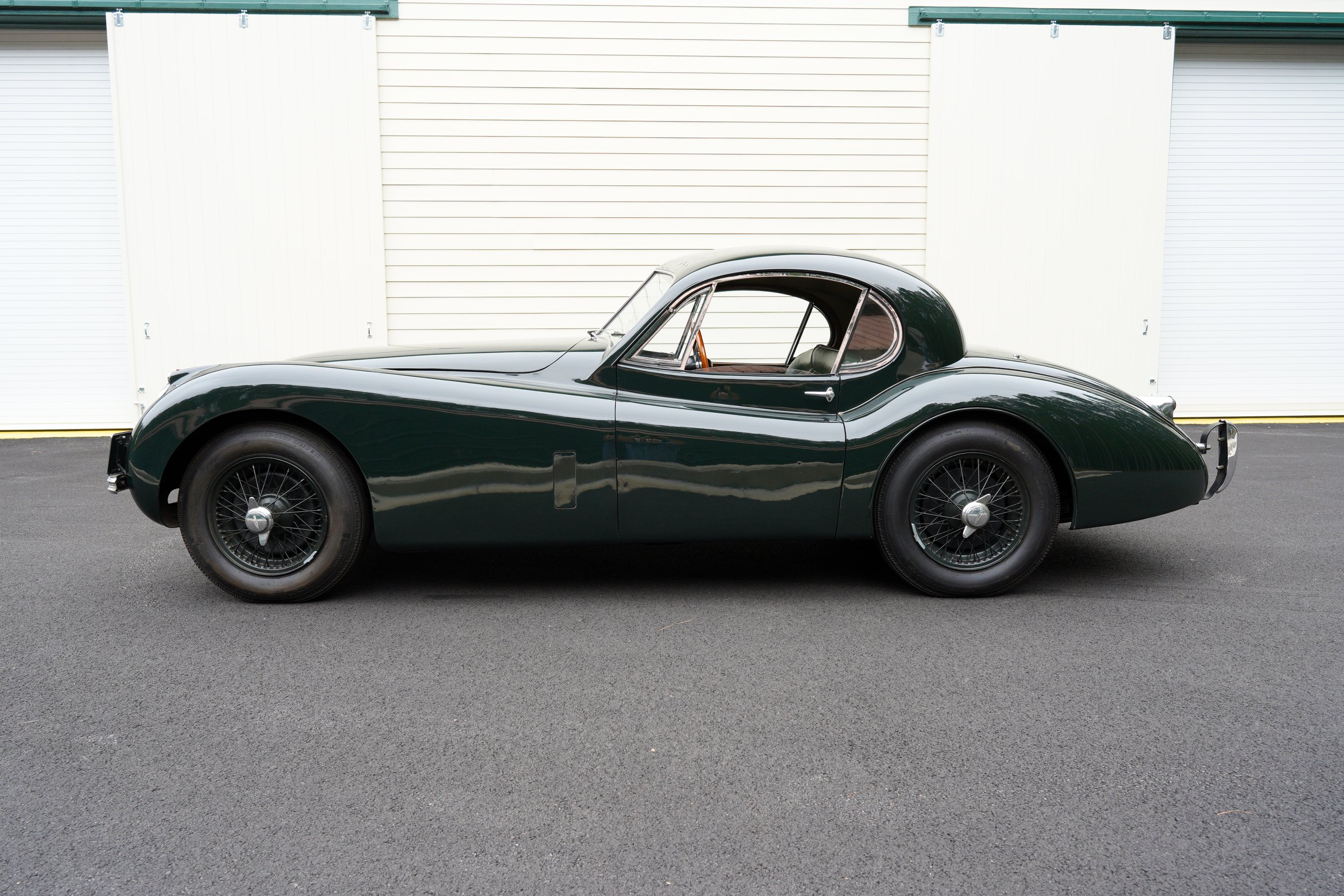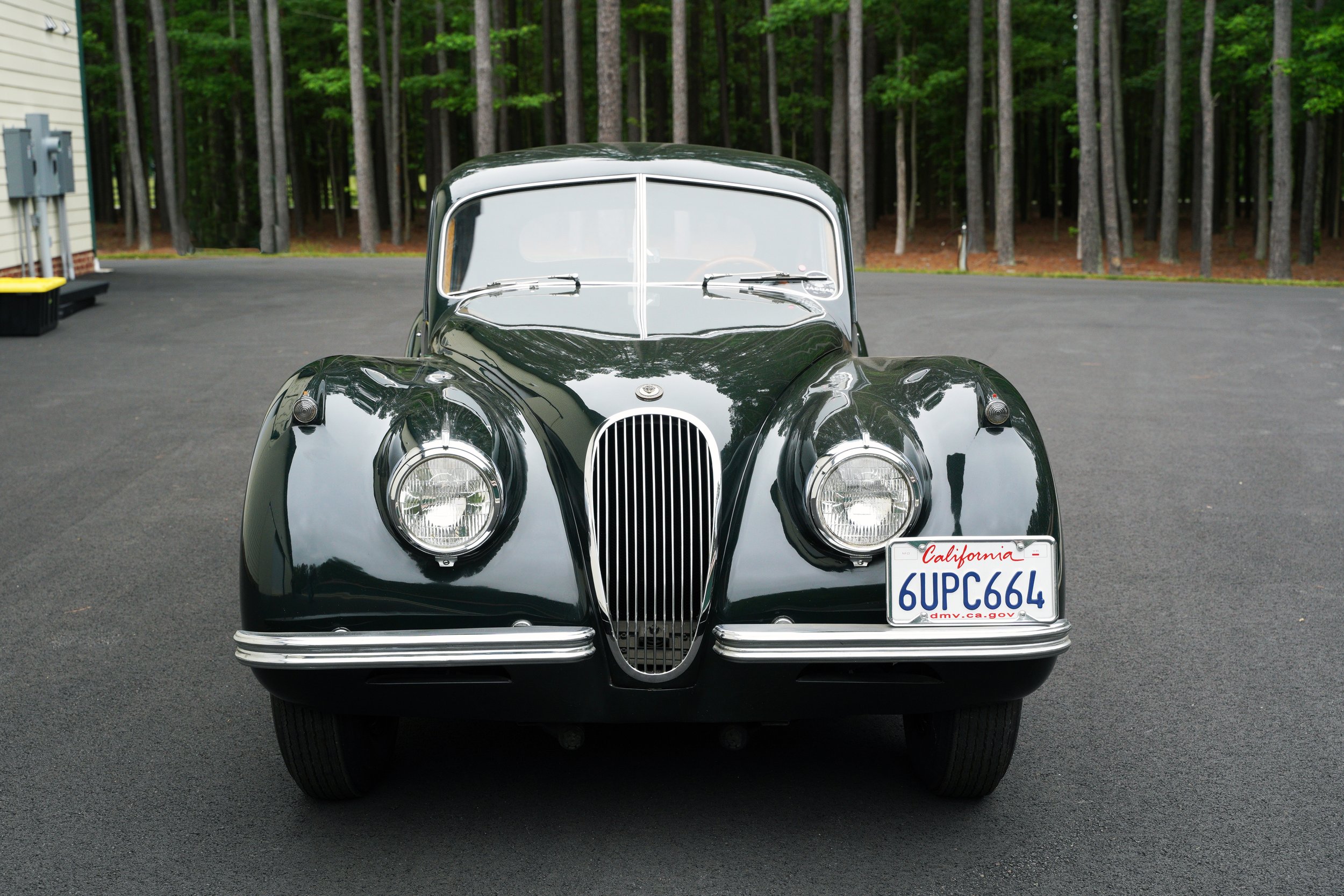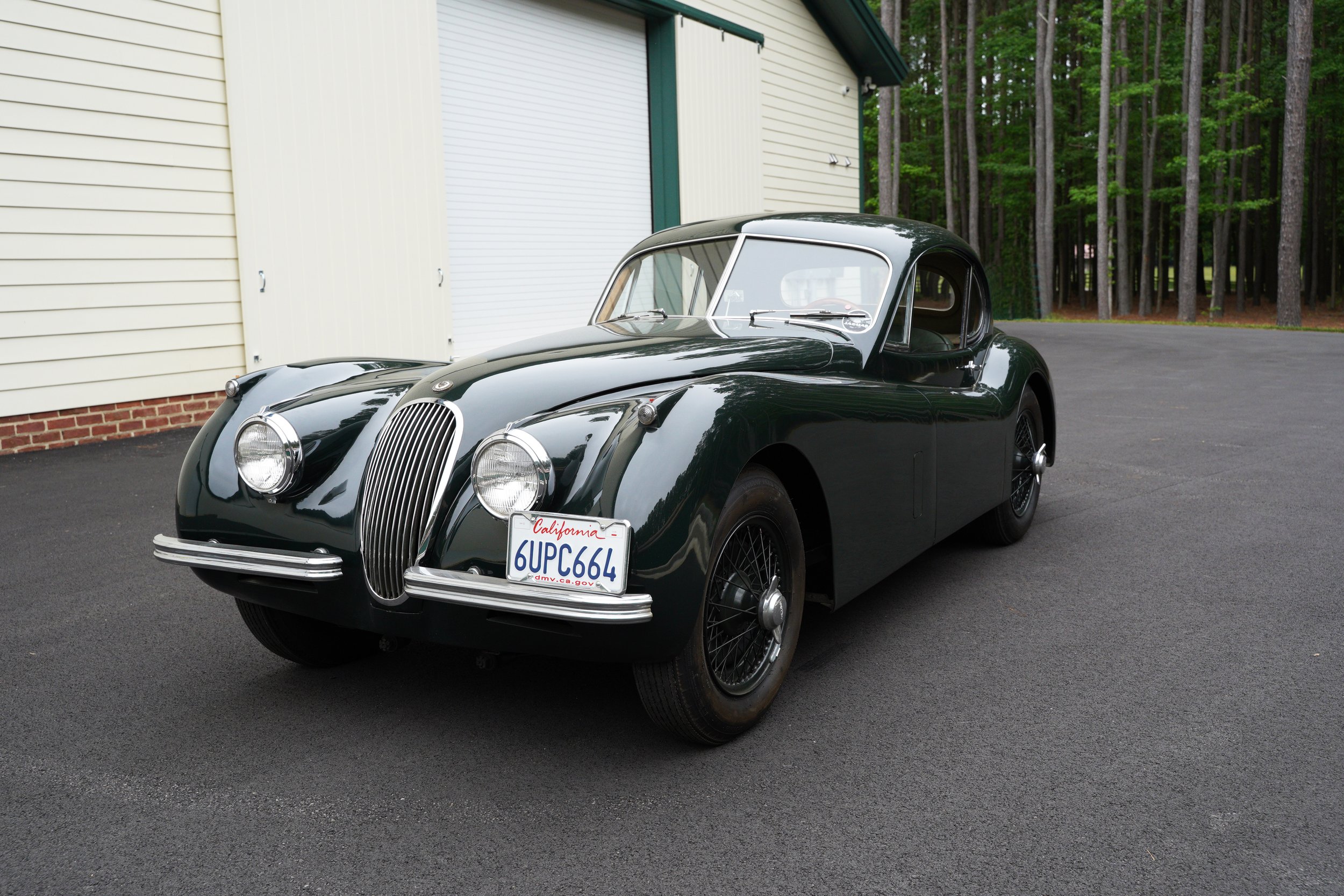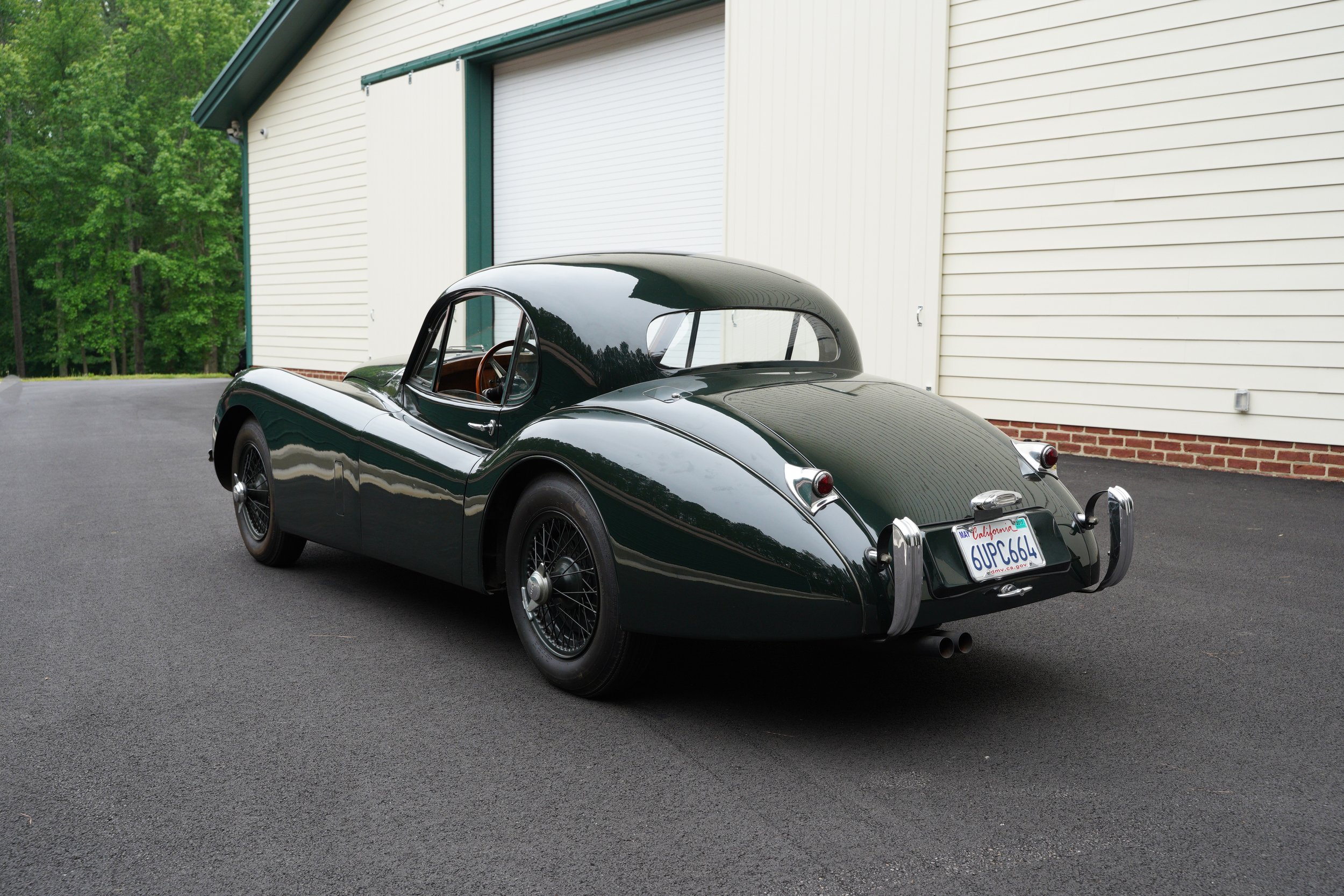1952 Jaguar XK120M Fixed Head Coupe





● Engineering – The beginning of the legendary XK DOHC inline 6-cylinder engine; 120mph performance; great handling.
+ Design – Influenced by the pre-war aerodynamic French coach built ‘teardrop’ coupes, one of the most dramatic and evocative shapes in post-war British cars.
= Passion – A dramatic, elegant, powerful coupe with style and performance.
This was Nick Begovich’s second Jaguar, trading in a Mark V for the FHC. It was inspired by the French pre-war ‘teardrop” coupes, which Begovich loved and sought to buy later. His fixation on beautifully designed, sporty yet comfortable cars undoubtedly led him to the XK120, which he bought new. In the early 50’s, the XK120 M, with its upgrades C-type head, was perhaps the most notable high performance touring car available on the market. It was the beginning of the legendary XK DOHC inline 6-cyclinder engine. Few cars could achieve its great handling, and a top speed of 120 MPH from an inline-6 powerplant at this time.
The Jaguar XK120 was manufactured between 1948 and 1954. The XK120 was ultimately available in three versions or body styles, first as an open 2-seater described in the US market as a roadster (OTS), then as a fixed head coupé (FHC) from 1951 and finally as a drophead coupé (DHC) from 1953. 12,055 XK120s’ were produced, all with a price tag under $4000 in 1948.
Launched at the 1948 London motor show, the XK12 was presented as a testbed and show car for the new XK engine. Jaguar boss and founder William Lyons designed the XK120 -- without a sketch pad -- in just two weeks, working closely with a panel beater who shaped the aluminum and attached it to a shortened Mark V chassis. The XK120’s were sleeker than most other cars of the time and were popular with American soldiers who had encountered Jaguar in Europe just after World War II.
An open two-seater, the XK120 were all made with pressed steel bodies. The open two-seater's lightweight canvas top and detachable side screens stowed out of sight behind the seats. All models had removable spats ("fender skirts" in America) covering the rear wheel arches, which enhanced the streamlined look. Finally, the XK120s’ bulging fenders were capped by corner marker lamps that blended into the headlamps and its long hood. Fun fact, the "120" in the name referred to the aluminum car's 120 mph (193 km/h) top speed (faster with the windscreen removed).
XK120s were highly successful in racing and rallying. A couple of young drivers who went on to international fame -- Phil Hill and Stirling Moss -- successfully campaigned XK120s in the early days, and the model spawned the legendary Le Mans-winning C- and D-type Jaguars.
XK120 M Specifications
Engine: 3.4 L Inline-6 Cylinder C-type head
Horsepower: 180 @ 5300 RPM
Torque: 195 ft/lbs @ 2500 RPM
Transmission: 4-Speed Manual
Top speed: 120 mph
Weight: 3060 lbs













